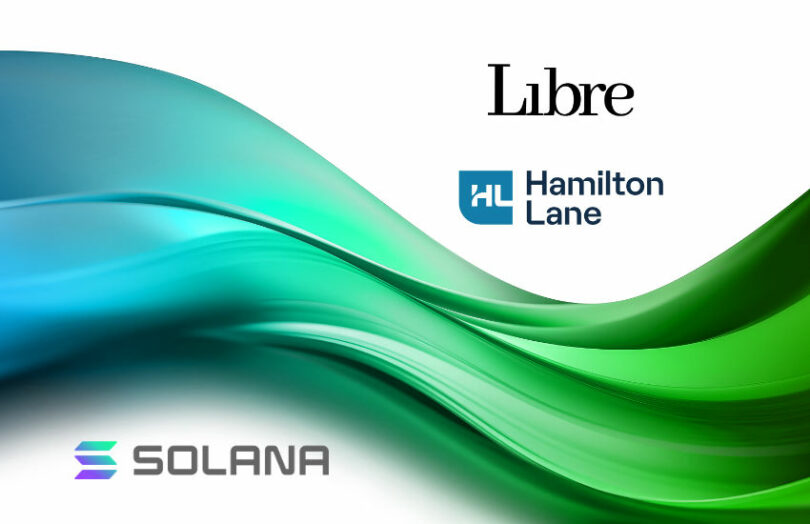Today Libre unveiled its tokenized funds on its second public blockchain, Solana. The new fund is a feeder fund for Hamilton Lane’s Senior Credit Opportunities Fund (“SCOPE”).
Libre is a public blockchain fund tokenization protocol, which is a joint venture between Nomura’s digital asset arm Laser Digital and WebN, founded by the former CEO of Brevan Howard, Alan Howard.
It launched its first fund token in March, the Brevan Howard Master fund as well as a U.S. dollar money market fund invested in BlackRock Treasury ETFs to enable investors to park funds. Both were on a sidechain of the Polygon blockchain, but Libre aims to be a multi blockchain protocol. Hence, both funds are now available on Solana. It uses the Libre Gateway DeFi dApp to deploy the tokens on each chain. Libre’s target market includes asset managers, wealth managers and institutional or accredited investors.
“The launch of the Libre Gateway on Solana is a huge step forward to enable access to wealth and treasury management tools for users on Solana, and for Libre to take advantage of the low latency and throughput capability of Solana to launch new and innovative services,” said Libre’s CEO and founder, Dr. Avtar Sehra.
Later this year Libre plans to expand its functionality, including collateralized lending and automated rebalancing of separately managed accounts (SMAs).
Regulatory compliant tokens
As a fund tokenization protocol the aim is to enable tokens to pass from the issuer to distributors and onwards to investors. Hence, it wants to support access to the funds in a regulatory compliant manner.
Talking to Ledger Insights earlier this year, Sehra said, “It’s not just about KYC and AML. It’s about saying, if I’ve got a fund based in Luxembourg for example, what can that fund do? What jurisdictions can that be distributed to? And what kind of investors can you distribute to? So all of these kinds of flags are recorded, essentially encoded into the asset.”
He continued, “And then on the other side, the distributors can onboard their investors and they can ask what kind of investor is this? And what kind of assets could they hold, etcetera? What jurisdictions could they (the assets) come from? And then ultimately what the protocol does, it connects the two sides from a compliance perspective.”






